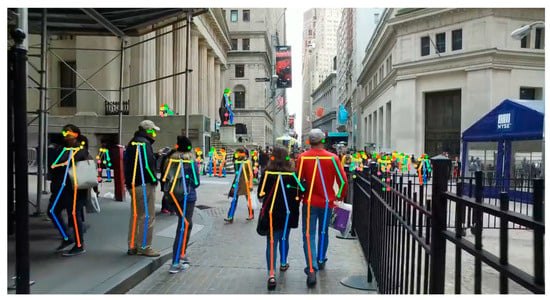Journal Description
Geographies
Geographies
is an international, peer-reviewed, open access journal on geography published quarterly online by MDPI.
- Open Access— free for readers, with article processing charges (APC) paid by authors or their institutions.
- High Visibility: indexed within Scopus, AGRIS, RePEc, and other databases.
- Rapid Publication: manuscripts are peer-reviewed and a first decision is provided to authors approximately 22 days after submission; acceptance to publication is undertaken in 4.6 days (median values for papers published in this journal in the second half of 2023).
- Recognition of Reviewers: APC discount vouchers, optional signed peer review, and reviewer names published annually in the journal.
Latest Articles
Ten Traps for Non-Representational Theory in Human Geography
Geographies 2024, 4(2), 253-286; https://doi.org/10.3390/geographies4020016 - 18 Apr 2024
Abstract
►
Show Figures
Non-Representational Theory (NRT) emphasizes the significance of routine experience in shaping human geography. In doing so, the theory largely eschews traditional approaches that have offered area-based, longitudinal, and synoptic formalisms for geographic inquiry. Instead, NRT prioritizes the roles of individualized and often dynamic
[...] Read more.
Non-Representational Theory (NRT) emphasizes the significance of routine experience in shaping human geography. In doing so, the theory largely eschews traditional approaches that have offered area-based, longitudinal, and synoptic formalisms for geographic inquiry. Instead, NRT prioritizes the roles of individualized and often dynamic lived geographies as they unfold in the moment. To date, NRT has drawn significant inspiration from the synergies that it shares with philosophy, critical geography, and self-referential ethnography. These activities have been tremendous in advancing NRT as a concept, but the theory’s strong ties to encounter and experience invariably call for practical exposition. Alas, applications of NRT to concrete examples at scales beyond small case studies often prove challenging, which we argue artificially constrains further development of the theory. In this paper, we examine some of the thorny problems that present in applying NRT in practical terms. Specifically, we identify ten traps that NRT can fall into when moving from theory to actuality. These traps include conundrums of small geographies, circularity in representation, cognitive traps, issues of mustering and grappling with detail, access issues, limitations with empiricism, problems of subjectivity, methodological challenges, thorny issues of translation, and the unwieldy nature of process dynamics. We briefly demonstrate a novel observational instrument that can sidestep some, but not all, of these traps.
Full article
Open AccessArticle
Exploring Spatio-Temporal Pattern of Gentrification Processes in Intracity Slums in the Lagos Megacity
by
Olabisi S. Obaitor, Marion Stellmes and Tobia Lakes
Geographies 2024, 4(2), 231-252; https://doi.org/10.3390/geographies4020015 - 02 Apr 2024
Abstract
►▼
Show Figures
There have been increasing calls in gentrification studies to examine the geography of gentrification in slums, as little is known about the patterns and processes of slum gentrification, especially in sub-Saharan African cities where slums house over 50% of the urban population. This
[...] Read more.
There have been increasing calls in gentrification studies to examine the geography of gentrification in slums, as little is known about the patterns and processes of slum gentrification, especially in sub-Saharan African cities where slums house over 50% of the urban population. This study explored the spatiotemporal changes in slums in Lagos, Nigeria, between 1984 and 20 on the pattern and drivers of gentrification. Data were collected from 42 slums in Lagos through remote sensing (1984–2020) and a field survey (2020–2021). The study integrated geospatial analysis with quantitative and qualitative analysis to investigate the patterns and drivers of gentrification in Lagos slums. The findings show that between 1984 and 2020, all the sampled slums had undergone gentrification processes, apart from those that were completely cleared. However, many slums continue to have deprived areas as they continue to gentrify. Almost all the slum communities have experienced slum clearance in the past. Additionally, the current and new housing developments in the study have favored middle- to high-income groups, which has led to the displacement of previous slum residents. The study identified slum clearance, fires and floodings, the presence of palaces in the community, the proportion of deprived areas in 1984, government interest in the slum, and the size of the church as drivers of slum gentrification processes in Lagos. Finally, the findings show that the vulnerability of slum dwellers increases with slum gentrification. Therefore, this study recommended developing policies and programs, such as sustainable relocation and low-cost housing, to mitigate the negative consequences of slum gentrification, especially in cities with significant shares of low-income groups.
Full article

Figure 1
Open AccessArticle
From Crops to Kilowatts: An Empirical Study on Farmland Conversion to Solar Photovoltaic Systems in Kushida River Basin, Japan
by
Zhiqiu Xie, S M Asik Ullah and Chika Takatori
Geographies 2024, 4(2), 216-230; https://doi.org/10.3390/geographies4020014 - 25 Mar 2024
Abstract
►▼
Show Figures
In Japan, rural areas are grappling with population decline and aging, leading to a shortage of labor for farmland maintenance. This has resulted in the abandonment of farmland or its conversion for solar photovoltaic (PV) use. However, this unplanned conversion raises concerns about
[...] Read more.
In Japan, rural areas are grappling with population decline and aging, leading to a shortage of labor for farmland maintenance. This has resulted in the abandonment of farmland or its conversion for solar photovoltaic (PV) use. However, this unplanned conversion raises concerns about agricultural productivity decline, landscape degradation, biodiversity loss, water resource maintenance, and disaster prevention. This study focuses on the Kushida watershed, examining (1) accurate farmland classification using remote sensing data, (2) the geographical distribution of farmland converted to PV systems from 2016 to 2021 and concentrated along the river, especially on north-facing slopes, (3) the highest conversion rates in wheat fields, followed by legume fields, tea fields, and paddy fields, and (4) no clear correlation between farmland conversions and changes in the number of farmers, but associations with farmland geography and solar radiation levels. These findings contribute to a nuanced understanding of sustainable rural development in Japan, emphasizing the importance of considering geographical factors in the conversion of farmland to PV.
Full article
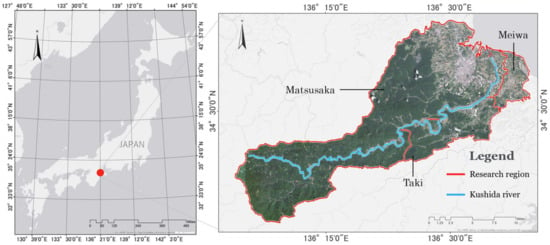
Figure 1
Open AccessArticle
Adding Gusts to a Mobile Wind Tunnel: Experimental Setup and Effect of Simulated Gusts on Horizontal Transport
by
Miriam Marzen
Geographies 2024, 4(2), 203-215; https://doi.org/10.3390/geographies4020013 - 23 Mar 2024
Abstract
►▼
Show Figures
Wind erosivity has an intermittent character due to complicated interactions between air streams, surface characteristics, and sediment particles. To experimentally investigate the effect of a sudden and local gust on sediment entrainment, a simple setup was installed in a mobile wind tunnel. One,
[...] Read more.
Wind erosivity has an intermittent character due to complicated interactions between air streams, surface characteristics, and sediment particles. To experimentally investigate the effect of a sudden and local gust on sediment entrainment, a simple setup was installed in a mobile wind tunnel. One, three, and five consecutive gusts were applied and compared with standard test conditions with steady wind. The applied wind was characterized by total test duration (s), duration of gust (s), mean velocity, peak velocity (m s−1), gust factor, and transport capacity based on sediment-specific threshold velocity. The eroded material was collected by sediment containers. The results suggest that 1. the application of gusts inside the mobile wind tunnel setup is feasible but related to uncertainty concerning the applied wind conditions, and 2. the horizontal transport rate increased with the number of applied gusts. While the highest rates were measured during five gusts on sand, the relative effect of gusts was most accentuated in the comparison of one gust to no gust on loam. The findings highlight how temporally and spatially limited gust impact causes extreme particle entrainment. These particles may subsequently either start erosion or enter vertical dust transport.
Full article

Figure 1
Open AccessArticle
Arrival Infrastructures: Segregation of Displaced Migrants and Processes of Urban Change in Athens
by
Vassilis P. Arapoglou and Stavros Nikiforos Spyrellis
Geographies 2024, 4(1), 182-202; https://doi.org/10.3390/geographies4010012 - 07 Mar 2024
Abstract
►▼
Show Figures
Recent treatment of accommodation and arrival infrastructures for asylum seekers and refugees has fuelled international research on refugee reception policies in urban environments and on the consequences of related initiatives of the European Union and international organizations such as the UNHCR. Using Athens
[...] Read more.
Recent treatment of accommodation and arrival infrastructures for asylum seekers and refugees has fuelled international research on refugee reception policies in urban environments and on the consequences of related initiatives of the European Union and international organizations such as the UNHCR. Using Athens as a case study, this article provides empirical evidence to revive the theoretical treatment of the importance of arrival and accommodation infrastructures in urban areas in transition. We collected and compiled data from four sources: the 2011 population census, the 2018 ESTIA accommodation program and the UNHCR Site Management Support (SMS) Reports of Temporary Accommodation Sites and Reception and Identification Centres (RICs), and a primary survey of services for asylum seekers and refugees. After the geocoding of data, we calculate indices for key dimensions of the segregation of accommodated asylum seekers and foreign nationals. We discuss the findings, seeking to highlight how the location and the composition of accommodation infrastructures has been influenced by a wider process of urban change and adaptations to global forces, leading not only to the transformation of inner-city zones but also suburban and peri-urban areas.
Full article
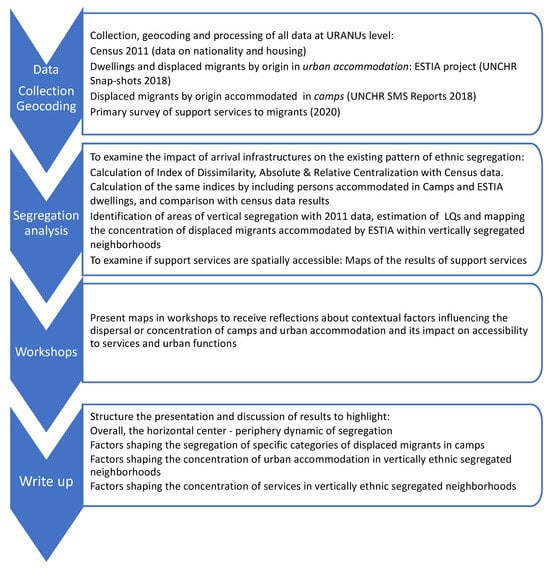
Figure 1
Open AccessArticle
Black Soils in the Eastern Mediterranean: Genesis and Properties
by
Hussam Hag Husein, Rupert Bäumler, Bernhard Lucke and Wahib Sahwan
Geographies 2024, 4(1), 168-181; https://doi.org/10.3390/geographies4010011 - 27 Feb 2024
Abstract
►▼
Show Figures
This study investigates the distribution, morphology, and properties of these soils, focusing on areas such as littoral plains, high hilly areas, and rift depression valleys. Black soils occur in the eastern Mediterranean with a limited distribution, and some of them meet the requirements
[...] Read more.
This study investigates the distribution, morphology, and properties of these soils, focusing on areas such as littoral plains, high hilly areas, and rift depression valleys. Black soils occur in the eastern Mediterranean with a limited distribution, and some of them meet the requirements for black soils according to the INBS (International Network of Black Soils), while others do not. Black soils can be categorized into three types based on their genesis and evolution: calcareous black soils (mainly raw rocky rendzina), hydromorphic black soils, and black soil on basalt. While black soils were found in various bioclimatic stages and parent materials, their presence was notably limited in certain areas, contrary to prior indications. A soil morphology analysis revealed distinct color variations and depths, influenced by the accumulation of organic matter for hydromorphic and calcareous black soils and basaltic parent material for black soils on basalt. A particle size analysis indicated texture variations from clay to loam, with no clear indication of illuviation. A chemical analysis showed alkaline pH levels, except in basalt-derived soils, which exhibited a slight acidity. Hydromorphic black soil is the most important in terms of expansion and agricultural use and is only found in limestone marl deposits and lakes in depressions emerging from Dead Sea rifts under conditions of saturation or poor drainage. These soils have a thick, dark moly horizon and a high organic matter content.
Full article
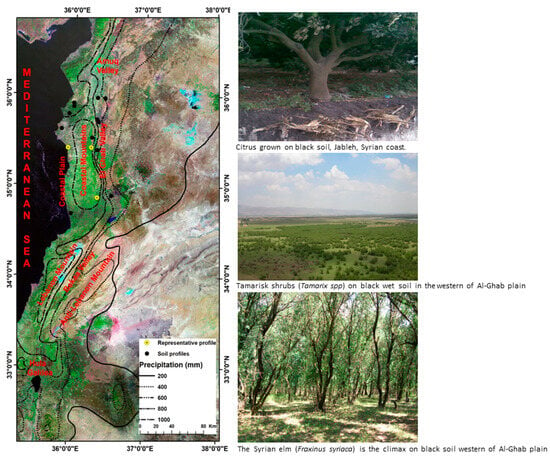
Figure 1
Open AccessArticle
Hydromorphic Impact of Matera’s Urban Area
by
Ruggero Ermini, Carmen Fattore and Amir Aubed Zoubi
Geographies 2024, 4(1), 152-167; https://doi.org/10.3390/geographies4010010 - 27 Feb 2024
Cited by 1
Abstract
►▼
Show Figures
Urban transformations change land use, permeability, and morphology of the areas involved in the evolution process; this, consequently, modifies the impact produced by the precipitation phenomena and increases the risk of flooding or uncontrolled runoff in different areas.The proposed watershed hydrologic approach enables
[...] Read more.
Urban transformations change land use, permeability, and morphology of the areas involved in the evolution process; this, consequently, modifies the impact produced by the precipitation phenomena and increases the risk of flooding or uncontrolled runoff in different areas.The proposed watershed hydrologic approach enables us to consider the morphology of the territory together with the transformations implemented by human activities, and this allows us to evaluate the effects of each area on neighboring areas, emphasizes the hydrological roles of upper, intermediate, and lower parts, and reveals urban and non-urban connections. This elucidates hydromorphic complexities in urban transformations and assesses climate change adaptability. The suggested methodology has been implemented in the urban district of “Sasso Caveoso” within the city of Matera. This application facilitates a quantitative synthesis of the contextual response, allowing for an analysis across various scenarios and offering decision-support tools of practical utility.
Full article
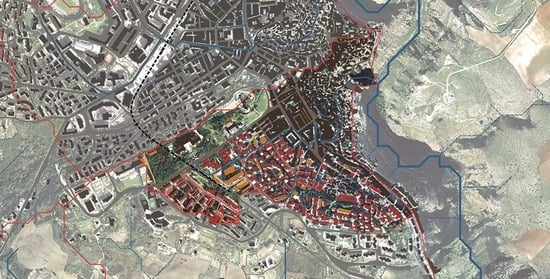
Graphical abstract
Open AccessArticle
An Environmental Equity Assessment Using a Social Vulnerability Index during the SARS-CoV-2 Pandemic for Siting of Wastewater-Based Epidemiology Locations in the United States
by
Jessica R. Mosher, Jim E. Banta, Rhonda Spencer-Hwang, Colleen C. Naughton, Krystin F. Kadonsky, Thomas Hile and Ryan G. Sinclair
Geographies 2024, 4(1), 141-151; https://doi.org/10.3390/geographies4010009 - 16 Feb 2024
Abstract
►▼
Show Figures
Research has shown that there has consistently been a lack of equity and accessibility to SARS-CoV-2 testing in underserved and disadvantaged areas in the United States. This study examines the distribution of Wastewater-Based Epidemiology (WBE) testing placement across the United States (US), particularly
[...] Read more.
Research has shown that there has consistently been a lack of equity and accessibility to SARS-CoV-2 testing in underserved and disadvantaged areas in the United States. This study examines the distribution of Wastewater-Based Epidemiology (WBE) testing placement across the United States (US), particularly within the context of underserved communities, and explores an environmental equity approach to address the impact of WBE on future pandemics. The methods combined the Centers for Disease Control Social Vulnerability Index (CDC-SVI) data set at the county level in a geospatial analysis utilizing ArcGIS and multilinear regression analysis as independent variables to investigate disparities in WBE coverage in the US. The findings show that disparities exist between counties in the use of WBE nationwide. The results show that WBE is distributed inequitably on national and state levels. Considering the nationwide adoption of WBE and funding availability through the CDC National Wastewater Surveillance System, these findings underscore the importance of equitable WBE coverage for effective COVID-19 monitoring. These findings offer data to support that a focus on expanding WBE coverage to underserved communities ensures a proactive and inclusive strategy against future pandemics.
Full article
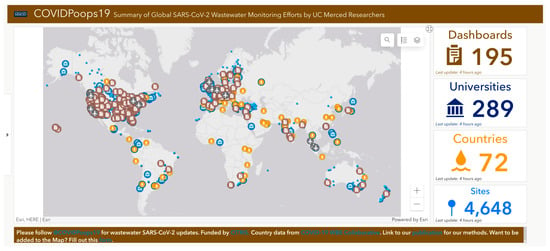
Figure 1
Open AccessArticle
Children’s Independent Mobility in Urban Planning: Geospatial Technology with a Technical Approach and Citizens’ Listening
by
Ana Clara Mourão Moura, Ashiley Adelaide Rosa and Paula Barros
Geographies 2024, 4(1), 115-140; https://doi.org/10.3390/geographies4010008 - 05 Feb 2024
Abstract
►▼
Show Figures
This study proposes planning for children’s independent mobility through geoinformation technologies by listening to children. This research assumes that children’s values and expectations must be considered in city planning. A bibliographic review identified 15 indicators which make spaces safe and attractive for children
[...] Read more.
This study proposes planning for children’s independent mobility through geoinformation technologies by listening to children. This research assumes that children’s values and expectations must be considered in city planning. A bibliographic review identified 15 indicators which make spaces safe and attractive for children to circulate and play. Thematic maps of the indicators were prepared and integrated by a multicriteria analysis by the weights of the evidence according to the hierarchical importance of each variable. The definition of the weights considered the opinions of the children and technicians. The consultation with children was carried out by mapping volunteers (VGI), a consultation on hierarchy, the geodesign of ideas for the area, and an artistic workshop. In the technical study, the query applied the Delphi method. It used the VGI—Volunteered Geographic Information—web-based platform, where children recorded places of topophilia and topophobia, while technicians mapped the presence of 15 indicators. The set of information was made available on a web-based platform called SDI—Spatial Data Infrastructure—in which there are resources for a geodesign workshop where ideas for the area were elaborated through negotiation and cocreation. The product is a transformational design for the area through urban design and the parameterization of its uses.
Full article
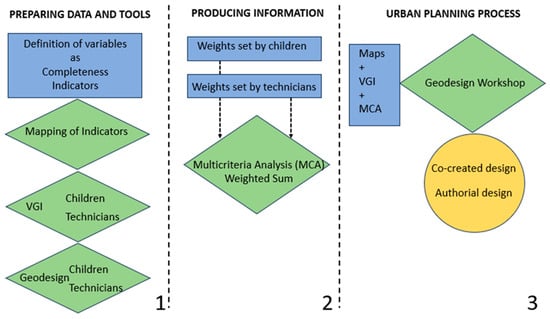
Figure 1
Open AccessArticle
Redefining Absentee: Towards Understanding Place Attachment and Stewardship in Non-Residential Landowners in Texas, USA
by
Christina W. Lopez, Evgenia Spears, Tyler C. Hartwick, John C. Killough and Michael A. Schuett
Geographies 2024, 4(1), 95-114; https://doi.org/10.3390/geographies4010007 - 02 Feb 2024
Abstract
►▼
Show Figures
Approximately 30% of the private land in Texas, USA is under absentee ownership. Understanding who absentee landowners are and their land management behaviors is vital for the protection of privately owned landscapes and the ecosystem services that they support, including surface water quality.
[...] Read more.
Approximately 30% of the private land in Texas, USA is under absentee ownership. Understanding who absentee landowners are and their land management behaviors is vital for the protection of privately owned landscapes and the ecosystem services that they support, including surface water quality. By focusing on absentee landowners with properties in five watersheds in Texas, we utilized the theory of place attachment to gain insights into absentee landowners’ land management decisions and their involvement in water quality conservation programs, such as watershed protection plans (WPPs). By conducting a mail-out survey, we obtained 100 responses, which were analyzed using an exploratory factor analysis and a series of nonparametric assessments. The results revealed that, contrary to the term “absentee”, the landowners in our study demonstrated strong feelings of place attachment and heightened land stewardship. Based on these findings, we suggest that instead of considering absentee landowners as obstacles to collaborative conservation initiatives, such as WPPs, natural resource practitioners should recognize and capitalize on the emotional attachment that these landowners have to their properties, thereby fostering their involvement. By demonstrating the owner–land relationship and its behavioral outcomes among absentee landowners, this study provides a novel contribution to the existing literature on place attachment in the context of private land management and conservation.
Full article
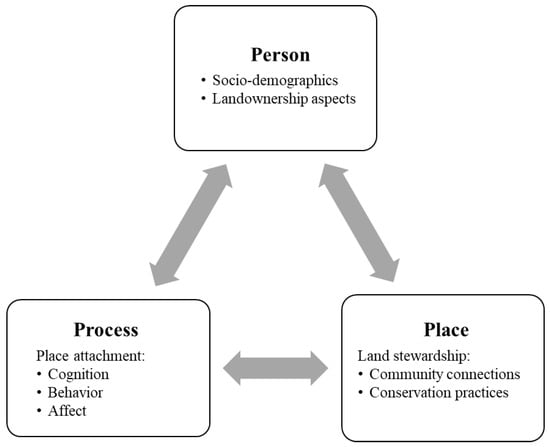
Figure 1
Open AccessArticle
Estimating Riparian Water Movement in an Incipient Karst Landscape—Minnesota, USA
by
Shubham Aggarwal, Kevin J. Kuehner and Joe Magner
Geographies 2024, 4(1), 83-94; https://doi.org/10.3390/geographies4010006 - 01 Feb 2024
Abstract
►▼
Show Figures
Understanding rain, ground, and surface water interactions in riparian zones is essential for hydrologic and environmental management. The novelty of this study lies in its revelation of isotopic shifts and consequent evaluation of hydrologic pathways and processes within the forested riparian zones of
[...] Read more.
Understanding rain, ground, and surface water interactions in riparian zones is essential for hydrologic and environmental management. The novelty of this study lies in its revelation of isotopic shifts and consequent evaluation of hydrologic pathways and processes within the forested riparian zones of three distinct streams, valleys, and riparian systems in a carbonate-sandstone incipient karst landscape. We collected water samples from three southeastern Minnesota catchments: Trout Brook, Crystal Creek, and Bridge Creek. A Picarro L2130i was used to measure δ18O for oxygen, and δD for deuterium in units of ‰ (per mil). We estimated the global meteoric line for the study sites, built upon aquifer age dating, and explored aquifer transit time for the study sites using a simple seasonal amplitude model. The results showed small amplitudes for 2020 and 2021, suggesting that bedrock aquifer water was the primary source water with a mean core transit time greater than 10 years. All three catchments were different but had similar bedrock valley types and riparian sediment. The primary driving factor was the seasonal precipitation input mixing with existing water. In a normal to wetter year, the isotopic data showed larger amplitude shifts between seasons with trendlines that adjusted depending on the temperature of the new water additions. The proposed approach is valuable in revealing complex hydrologic processes and pathways and can contribute extensively to the planning and management of karst riparian systems.
Full article
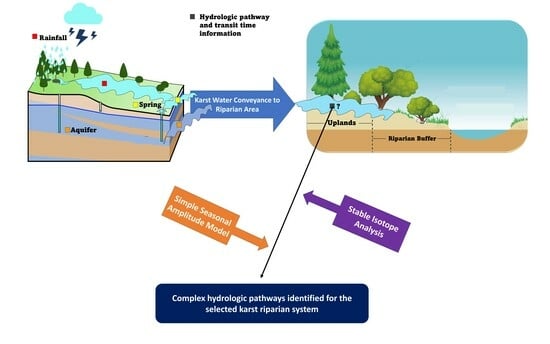
Graphical abstract
Open AccessArticle
Towards Real-Time 3D Terrain Reconstruction from Aerial Imagery
by
Qiaosong Wang
Geographies 2024, 4(1), 66-82; https://doi.org/10.3390/geographies4010005 - 29 Jan 2024
Abstract
►▼
Show Figures
We present a near real-time solution for 3D reconstruction from aerial images captured by consumer UAVs. Our core idea is to simplify the multi-view stereo problem into a series of two-view stereo matching problems. Our method applies to UAVs equipped with only one
[...] Read more.
We present a near real-time solution for 3D reconstruction from aerial images captured by consumer UAVs. Our core idea is to simplify the multi-view stereo problem into a series of two-view stereo matching problems. Our method applies to UAVs equipped with only one camera and does not require special stereo-capturing setups. We found that the neighboring two video frames taken by UAVs flying at a mid-to-high cruising altitude can be approximated as left and right views from a virtual stereo camera. By leveraging GPU-accelerated real-time stereo estimation, efficient PnP correspondence solving algorithms, and an extended Kalman filter, our system simultaneously predicts scene geometry and camera position/orientation from the virtual stereo cameras. Also, this method allows for the user selection of varying baseline lengths, which provides more flexibility given the trade-off between camera resolution, effective measuring distance, flight altitude, and mapping accuracy. Our method outputs dense point clouds at a constant speed of 25 frames per second and is validated on a variety of real-world datasets with satisfactory results.
Full article

Figure 1
Open AccessArticle
Parallels in Cartography: Standard, Equidistantly Mapped and True Length Parallels
by
Miljenko Lapaine
Geographies 2024, 4(1), 52-65; https://doi.org/10.3390/geographies4010004 - 10 Jan 2024
Abstract
►▼
Show Figures
In the literature on map projections, we regularly encounter the name standard parallel or standard parallels. However, it is obvious that a unique definition of a standard parallel is not universally accepted. To fully clarify the meaning of standard parallels, the author proposes
[...] Read more.
In the literature on map projections, we regularly encounter the name standard parallel or standard parallels. However, it is obvious that a unique definition of a standard parallel is not universally accepted. To fully clarify the meaning of standard parallels, the author proposes the notion of equidistantly mapped parallels, which has not been common in the literature so far. Equidistantly mapped parallels can be in the direction of the parallel or in the direction of the meridian. Here, it is shown that every standard parallel is also an equidistantly mapped parallel, but that the reverse need not be true. If the parallel is mapped equidistantly in the direction of the parallel, then its length in the projection plane is equal to the length of that parallel on the sphere. The opposite does not have to be true, i.e., if the length of the image of the parallel in the projection plane is equal to the length of the parallel on the sphere, this does not mean that the parallel was mapped equidistantly. In addition to standard and equidistant parallels, the concept of parallels of true length also appears in the theory of map projections. They should also be distinguished from standard and equidistant parallels.
Full article

Figure 1
Open AccessReview
Backpackers’ Tourism and Health: A Narrative Literature Review
by
Sebastien Fleuret
Geographies 2024, 4(1), 40-51; https://doi.org/10.3390/geographies4010003 - 09 Jan 2024
Abstract
►▼
Show Figures
Backpackers are an unusual category of travellers. Their unique mobility patterns, spatial practices, and the areas they travel through expose them to health situations that remain largely unexplored to date. This article conducts a narrative literature review (across six different databases in English
[...] Read more.
Backpackers are an unusual category of travellers. Their unique mobility patterns, spatial practices, and the areas they travel through expose them to health situations that remain largely unexplored to date. This article conducts a narrative literature review (across six different databases in English and French) in this domain and highlights key contributions. The results show that backpackers frequently experience health problems during their trips. They are described as being more at risk than other tourists and more inclined to adopt harmful behaviours. However, the majority of related studies lack contextualisation, which is an advantage of geographical analysis. Moreover, given the limited volume of the existing literature, this review serves as an invitation to geographers to delve deeper into this intriguing field.
Full article
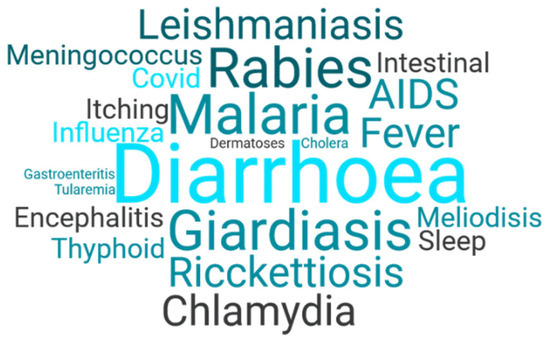
Figure 1
Open AccessCommunication
Glacial Lakes of Mongolia
by
Michael Walther, Ulrich Kamp, Nyam-Osor Nandintsetseg, Avirmed Dashtseren and Khurelbaatar Temujin
Geographies 2024, 4(1), 21-39; https://doi.org/10.3390/geographies4010002 - 08 Jan 2024
Cited by 1
Abstract
►▼
Show Figures
The over 2200 lakes of Mongolia are generally poorly studied, particularly the glacial lakes. This overview study presents a classification of the glacial lakes based on tectonic-geological and geomorphological dynamics. Selected representative lakes are described using results from fieldwork and satellite image analysis,
[...] Read more.
The over 2200 lakes of Mongolia are generally poorly studied, particularly the glacial lakes. This overview study presents a classification of the glacial lakes based on tectonic-geological and geomorphological dynamics. Selected representative lakes are described using results from fieldwork and satellite image analysis, including bathymetry, paleoshorelines, and recent lake-level fluctuations between 1987 and 2020. Generally, lake levels dropped from the early Holocene until recently, with the onset of the climate change-driven glacier recession that has resulted in lake-level rises and area expansion in almost all moraine-dammed, tongue-basin, and ice-contact lakes. In contrast, endorheic lakes have mainly been shrinking for the past forty years because of an increase in air temperature and evaporation rates and the effects of an intensifying water use within the catchment for irrigation, mining, and hydroelectric energy production in the form of dams. The creation of a lake monitoring system based on an in-depth inventory is recommended.
Full article
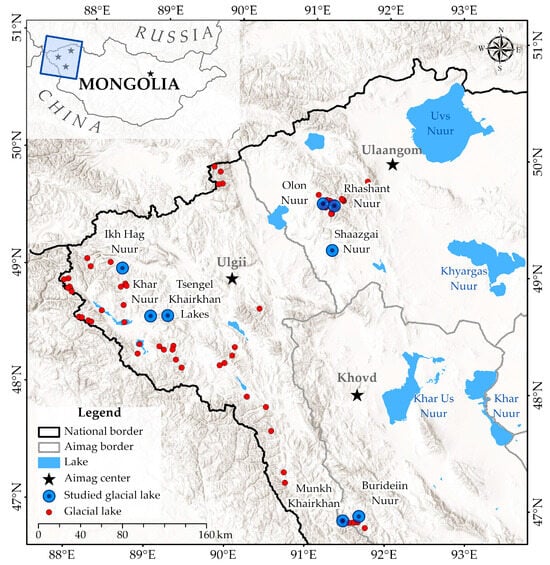
Figure 1
Open AccessArticle
Rural Depopulation in Greece: Trends, Processes, and Interpretations
by
Apostolos G. Papadopoulos and Pavlos Baltas
Geographies 2024, 4(1), 1-20; https://doi.org/10.3390/geographies4010001 - 22 Dec 2023
Abstract
►▼
Show Figures
Depopulation is caused by low fertility rates and out-migration, and it applies to countries, regions and smaller areas. Rural depopulation is defined as a sharp population decline that falls well below an adequate population size and indicates that an area has lost its
[...] Read more.
Depopulation is caused by low fertility rates and out-migration, and it applies to countries, regions and smaller areas. Rural depopulation is defined as a sharp population decline that falls well below an adequate population size and indicates that an area has lost its demographic reproductive capacity. This paper discusses the socioeconomic and territorial aspects of rural depopulation, attempting to do justice to the spatial dimensions of the phenomenon. Greece exhibits all the symptoms of demographic transition, leading to labour shortages, declining economic productivity, and increasing demands on the health and welfare system. The study on rural depopulation in Greece focuses on the changes and dynamics observed at the municipal and regional levels. A typology has been developed to identify rural communities in Greece. The main source of demographic data for our study is the Greek censuses (1991, 2001, 2011, and 2021). Demographic and socioeconomic trends in Greece are interlinked and show different regional and local dynamics. Rural depopulation is closely related to the study of (international and internal) migration, even though the latter does not provide a permanent solution to depopulation. An empirical analysis has shown that there is a need to revitalise rural areas through socioeconomic improvements, infrastructure investments, and policies that directly impact rural communities.
Full article
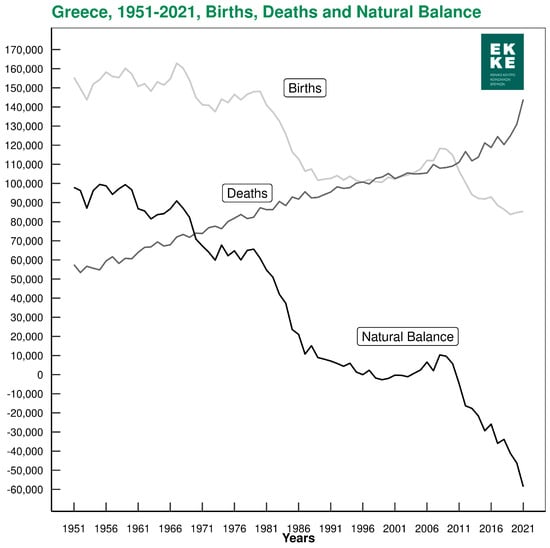
Figure 1
Open AccessArticle
Ranking Opportunities for Autonomous Trucks Using Data Mining and GIS
by
Raj Bridgelall, Ryan Jones and Denver Tolliver
Geographies 2023, 3(4), 806-823; https://doi.org/10.3390/geographies3040044 - 17 Dec 2023
Cited by 1
Abstract
The inefficiency of transporting goods contributes to reduced economic growth and environmental sustainability in a country. Autonomous trucks (ATs) are emerging as a solution, but the imbalance in the weight moved and ton-miles produced by long-haul and short-haul trucking creates a challenge in
[...] Read more.
The inefficiency of transporting goods contributes to reduced economic growth and environmental sustainability in a country. Autonomous trucks (ATs) are emerging as a solution, but the imbalance in the weight moved and ton-miles produced by long-haul and short-haul trucking creates a challenge in targeting initial deployments. This study offers a unique solution by presenting a robust method that combines data mining and geographic information systems (GISs) to identify the optimal routes for ATs based on a top-down approach to maximize business benefits. Demonstrated in a U.S. case study, this method revealed that despite accounting for only 16% of the weight moved, long-haul trucking produced 56% of the ton-miles, implying a high potential for ATs in this segment. The method identified eight key freight zones in five U.S. states that accounted for 27% of the long-haul weight and suggested optimal routes for initial AT deployment. Interstate 45 emerged as a pivotal route in the shortest paths among these freight zones. This suggests that stakeholders should seek to prioritize funding for infrastructure upgrades and maintenance along that route and the other routes identified. The findings will potentially benefit a broad range of stakeholders. Companies can strategically focus resources to achieve maximum market share, regulators can streamline policymaking to facilitate AT adoption while ensuring public safety, and transportation agencies can better plan infrastructure upgrades and maintenance. Users globally can apply the methodological framework as a reliable tool for decision-making about where to initially deploy ATs.
Full article
(This article belongs to the Special Issue Advanced Technologies in Spatial Data Collection and Analysis (Volume II))
►▼
Show Figures
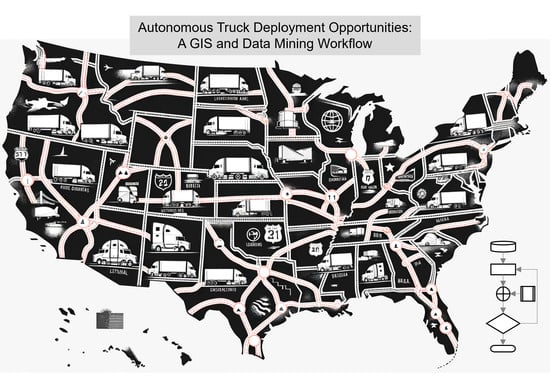
Graphical abstract
Open AccessEditorial
Geovisualization: Current Trends, Challenges, and Applications
by
Vassilios Krassanakis, Andriani Skopeliti, Merve Keskin and Paweł Cybulski
Geographies 2023, 3(4), 801-805; https://doi.org/10.3390/geographies3040043 - 14 Dec 2023
Abstract
Geovisualization (or Geographic Visualization) represents an interdisciplinary scientific field spanning cartography, geographic information science (GIScience) and technology, computer science and human–computer interaction (HCI), psychology, and cognitive science [...]
Full article
(This article belongs to the Special Issue Geovisualization: Current Trends, Challenges, and Applications)
Open AccessArticle
The Texas Historical Markers Program: Racial and Ethnic Narratives
by
Yusik Choi and Alberto Giordano
Geographies 2023, 3(4), 779-800; https://doi.org/10.3390/geographies3040042 - 05 Dec 2023
Abstract
►▼
Show Figures
In this article we explore the text of the over 16,000 historical markers erected in the state since 1936, using GIS and corpus linguistics to determine the where, how, what, and when of how Texas memorializes its racial and ethnic
[...] Read more.
In this article we explore the text of the over 16,000 historical markers erected in the state since 1936, using GIS and corpus linguistics to determine the where, how, what, and when of how Texas memorializes its racial and ethnic groups. Unsurprisingly, our results indicate that the story of Texas is implicitly a narrative of white people. More interestingly, the term “African (Americans)” begins to be commemorated especially after the 1990s, but only in stories of community, religion, school, and children, as Texas historical markers do not to dwell on narratives of slavery, the civil rights movement, and lynchings. “Indians” and “Mexicans” in the 1930s and 1960s exemplify the most egregious case of derogatory semantics we found in the markers. As concerns racial and ethnic groups, in general they tend to be memorialized where they were historically present, whether or not such groups are still there. The analysis also reveals the increasing concentration of the markers in urban areas.
Full article

Figure 1
Open AccessArticle
Geovisualization: A Practical Approach for COVID-19 Spatial Analysis
by
Petr Iakovlevitch Ekel, Sandro Laudares, Adriano José de Barros, Douglas Alexandre Gomes Vieira, Carlos Augusto Paiva da Silva Martins and Matheus Pereira Libório
Geographies 2023, 3(4), 763-778; https://doi.org/10.3390/geographies3040041 - 04 Dec 2023
Abstract
►▼
Show Figures
Web Geographic Information Systems (WebGISs) were widely used to monitor COVID-19 cases and deaths during the pandemic. Furthermore, geotechnologies were also very useful in education, public management, tourism, and other areas. Although there are WebGISs with a high level of sophistication, most are
[...] Read more.
Web Geographic Information Systems (WebGISs) were widely used to monitor COVID-19 cases and deaths during the pandemic. Furthermore, geotechnologies were also very useful in education, public management, tourism, and other areas. Although there are WebGISs with a high level of sophistication, most are simple, consisting of geovisualizers of cases, deaths, and vaccinations. This study develops a WebGIS that offers information about age, comorbidities, and tests, which can be analyzed from specific points such as hospitals, main access roads, regions, or neighborhoods. Although it is not a highly sophisticated solution, the WebGIS developed in this study is especially useful for municipal governments in developing countries like Brazil that do not have patient health data in geographic databases. The WebGIS developed in this study offers public managers essential information for developing effective public policies to combat the COVID-19 pandemic and other epidemiological phenomena such as dengue and malaria.
Full article
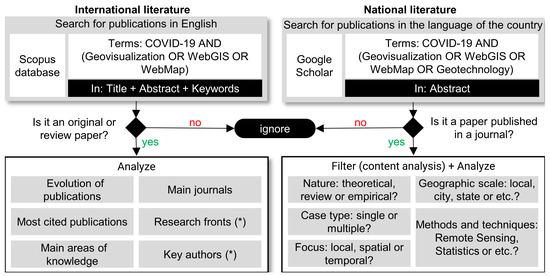
Figure 1
Highly Accessed Articles
Latest Books
E-Mail Alert
News
Topics
Topic in
Geographies, Geomatics, IJGI, Land, Urban Science
Spatial Decision Support Systems for Urban Sustainability
Topic Editors: Shivanand Balram, Raja Sengupta, Jorge RochaDeadline: 31 October 2024
Topic in
Applied Sciences, Geographies, GeoHazards, Geosciences, Remote Sensing, Water
Earth Observation Systems in Geology Mass Identification, Investigation and Inventory Mapping
Topic Editors: Shibiao Bai, Jinghui FanDeadline: 31 December 2024

Conferences
Special Issues
Special Issue in
Geographies
Advanced Technologies in Spatial Data Collection and Analysis (Volume II)
Guest Editors: Hartwig H. Hochmair, Gerhard Navratil, Haosheng HuangDeadline: 31 August 2024
Special Issue in
Geographies
Feature Papers of Geographies in 2024
Guest Editor: Xu ChenDeadline: 30 December 2024


